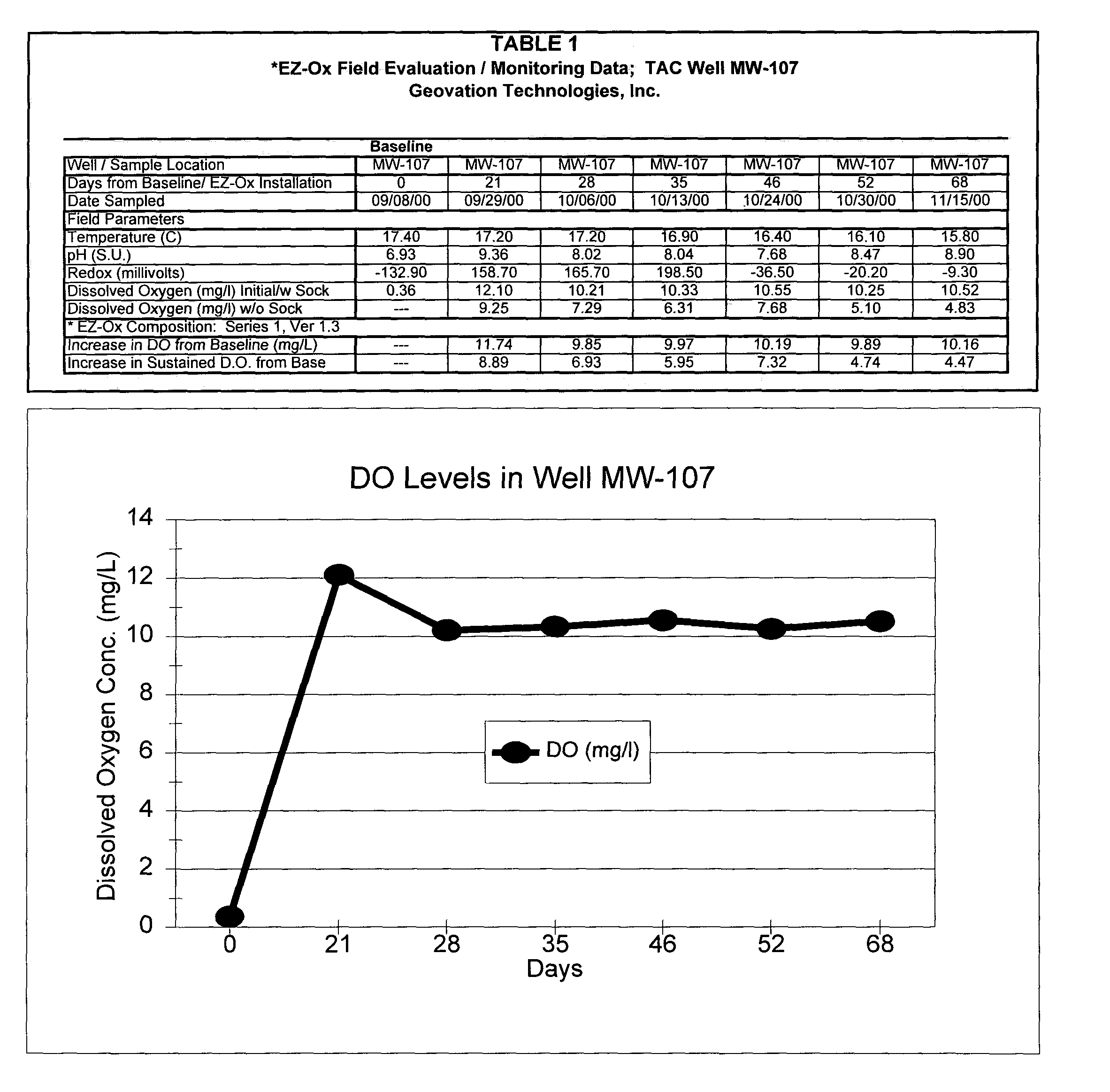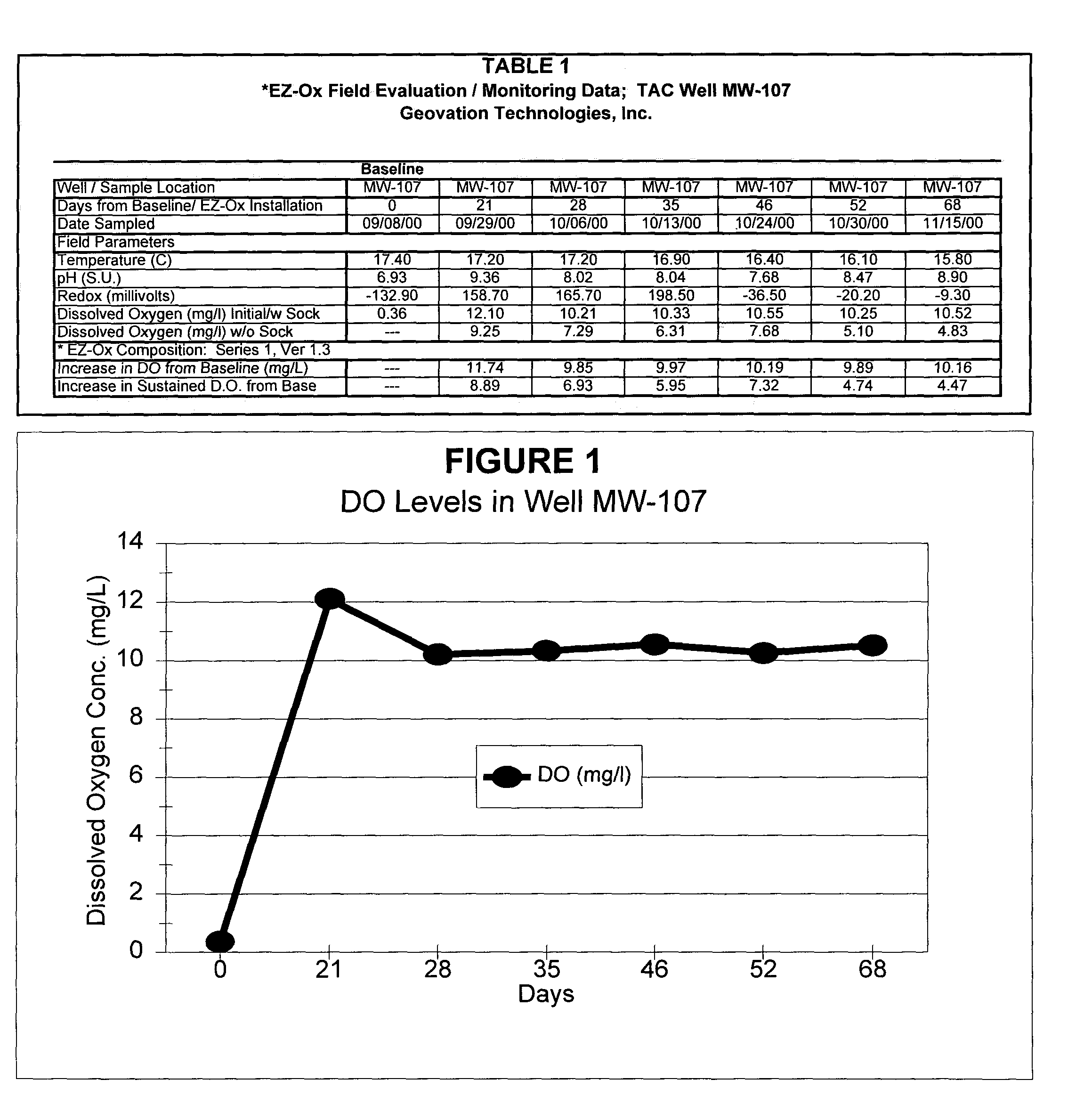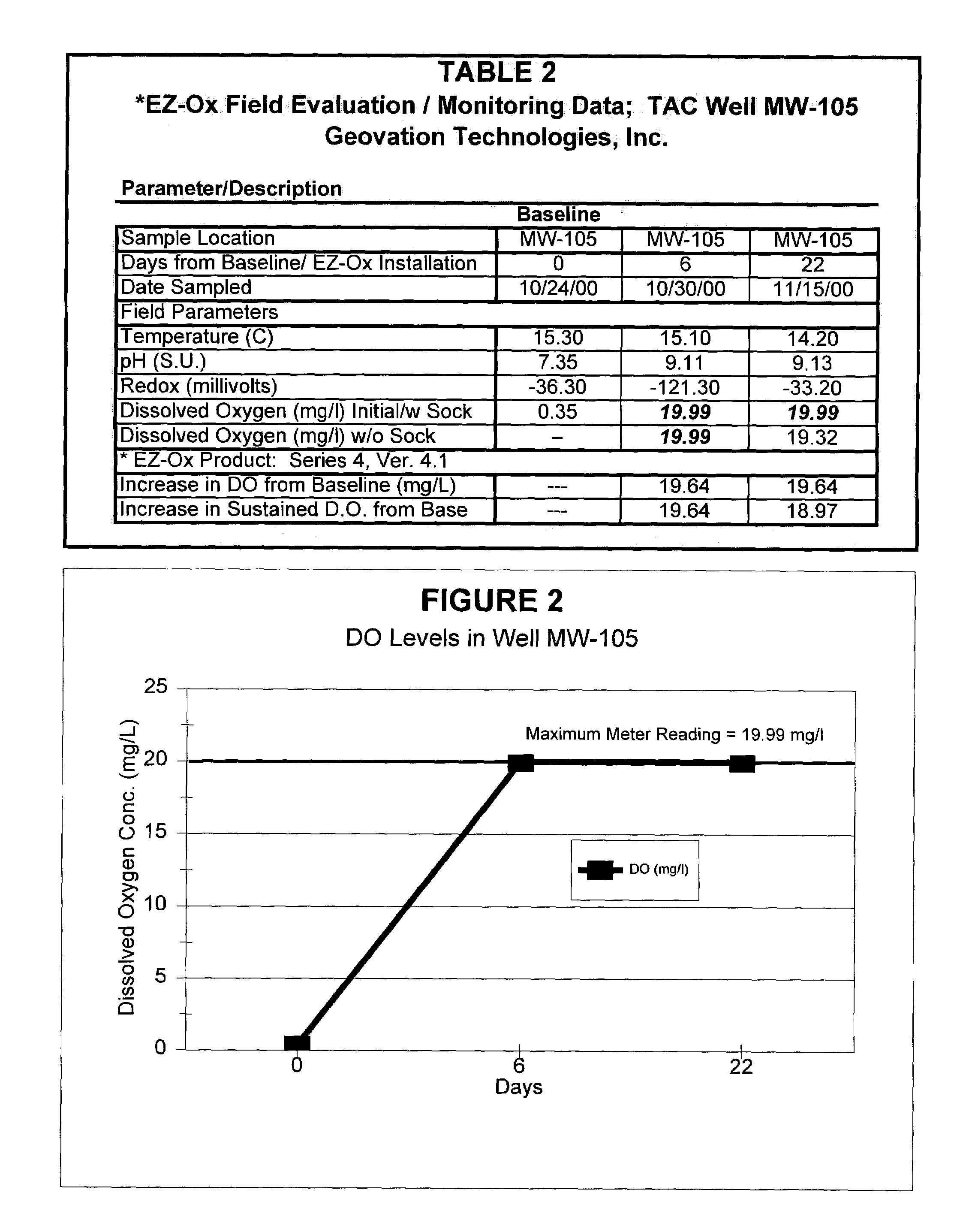Solid-chemical composition for the non-exothermic chemical oxidation and aerobic bioremediation of environmental contaminants
a technology of solid-media chemical composition and environmental pollution, which is applied in the direction of halogen oxide/oxyacid, other chemical processes, quary waste water treatment, etc., can solve the problems of large, long-term hazard to human health and the environment, and the inability to oxidize and aerobically oxidize environmental contaminants, so as to achieve less geochemically, effective and efficient delivery of nutrient phosphorus, and minimize the
- Summary
- Abstract
- Description
- Claims
- Application Information
AI Technical Summary
Benefits of technology
Problems solved by technology
Method used
Image
Examples
example 1
[0052]In experiments conducted by the inventor during the development of the solid-chemical composition of the present invention, several different chemical formulations were investigated and several manufacturing trials were conducted. These trials were conducted to evaluate the effects of different formulations and manufacturing methods for producing the preferred forms of the composition, particularly briquettes and granules. The recent testing of two distinctly different trial or “prototype” embodiments of the present invention revealed the critical importance of the incorporation of complex phosphates in the solid-chemical composition disclosed herein.
[0053]Prototype formulations designated as the “1” series and “2” series were manufactured using the same manufacturing process into granules of similar size. By example, the “1” series granulated compositions, which represent one of the preferred embodiments of the present invention, included, by weight, approximately ≧93% calciu...
example 2
[0055]A field test was conducted at a site characterized by significant, long-term ground-water contamination caused by subsurface releases of gasoline using the “1” series granulated composition described above, one of the preferred forms and embodiments of the disclosed solid-chemical composition of the present invention. First, a filter sock was filled with approximately 2-lbs. of the “1” series granulated composition. Subsequently, the sock was placed inside a stainless-steel canister and lowered into the saturated portion of a 2-in. diameter ground-water monitor well using a rope. The test well (MW-107) was selected to be representative of contaminant conditions in the downgradient portion of the plume, with moderate aqueous-phase contamination levels measured prior to treatment of approximately 5 mg / l of total benzene, toluene, ethylbenzene and xylenes (BTEX) and 7 mg / l of total gasoline compounds.
[0056]Weekly monitoring of the ground water conditions was conducted beginning t...
example 3
[0058]Different granulated embodiments of the solid-chemical composition disclosed herein, denoted as the “4” and “5” series compositions, were applied to other wells at the test site described above in Example 2. The “4” series composition was similar in most respects to the “1” series described above except that the total amount of organic disintegrants was reduced to 1% by weight. The “5” series composition tested is representative of one of the simplest preferred embodiments of the present invention, as it included only calcium peroxide and complex phosphates in similar proportions to the “4” series composition and contained no disintegrants whatsoever. The wells selected for the field testing of “4” and “5” series embodiments of the disclosed composition were previously documented to contain an-order-of-magnitude higher aqueous concentrations of gasoline compounds than well MW-107 used in the “1” series field test described in Example 2—hence the contaminant conditions in these...
PUM
 Login to View More
Login to View More Abstract
Description
Claims
Application Information
 Login to View More
Login to View More - R&D
- Intellectual Property
- Life Sciences
- Materials
- Tech Scout
- Unparalleled Data Quality
- Higher Quality Content
- 60% Fewer Hallucinations
Browse by: Latest US Patents, China's latest patents, Technical Efficacy Thesaurus, Application Domain, Technology Topic, Popular Technical Reports.
© 2025 PatSnap. All rights reserved.Legal|Privacy policy|Modern Slavery Act Transparency Statement|Sitemap|About US| Contact US: help@patsnap.com



